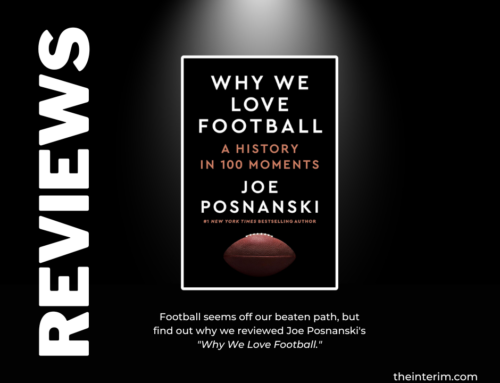Rick McGinnis:

Interim writer, Rick McGinnis, Amusements
Nearly 15 years ago, Emory professor Mark Bauerlein wrote The Dumbest Generation: How the Digital Age Stupefies Young Americans and Jeopardizes Our Future, a warning that the cohort just making their way out of the educational system were going to wrack havoc on civic and cultural life. It joined a library of books written from the frontlines of generational warfare, calling back wryly to the first battles in that war with its subtitle: (Don’t Trust Anyone Under 30).
Bauerlein’s thesis was that, despite having unprecedented access to information at nominal cost, young people were leaving school less effectively educated than any previous literate generation. The culprit, he said, was the “always on” digital universe into which they had been born; their miraculous devices hadn’t been a doorway to knowledge but to easy defaults to self-absorption, distraction, narrow pop culture obsessions and an ignorance of history. “The Dumbest Generation will cease being dumb only when it regards adolescence as an inferior realm of petty strivings,” he wrote, “and adulthood as a real of civic, historical and cultural awareness that puts them in touch with perennial ideas and struggles.”
So how did that turn out?
Searching for an answer, Bauerlein recently published The Dumbest Generation Grows Up: From Stupefied Youth to Dangerous Adults. By its title alone, you have an idea that, at least according to its author, the news isn’t good. “They enjoyed an unprecedented habitat, surrounded by the omnipresent screens,” he writes, “with the bells and whistles obscuring the facts of what they were missing. Their multi-year digital exposure hit them during the very years in which the world takes form in a child’s head. Digital tools and lax mentors primed them to flee from history, religion, great literature, and art, from music and ethics and American civics, into the fantasy of a society that would replicate the teenage bedroom, where freedom and friends predominated, games and photos and chats never stopped.”
Surveying the scene from academia, Bauerlein saw the most privileged and presumably most intelligent of the cohort demanding that administrators protect them from ideas that offended them, and that the curriculum be changed to cater to the worldview they were still, in the most inchoate part of their life, constructing. They made the same demands of the entertainment they watched, and the social media they consumed, and became the shock troops of an even more polarized politics, once they overcame the popular myth that young people had a hard time remembering to vote, or finding a polling station.
So far, so what? – a critic of Bauerlein’s thesis will say that every generation finds the ones following them to be wanting, much as they consider the ones immediately preceding them to be disappointing. Generational conflict thrives as much on situational bias as on statistics or verifiable trends.
But one section of his book fascinated me. He recalls a time, five years or so back, when the writer and online personality Milo Yiannopoulos, a controversial figure, had been invited to speak at his university. There was the usual eruption of protest from the student body, and Bauerlein asked one of his students – a young woman from outside the usual privileged, middle class bubble that his students inhabited – to tell him “what about Milo bothers these guys?” Bauerlein recalls that she answered with obvious consideration for her answer, “pausing and choosing her words carefully.” “Well,” she said, “they believe that everyone…deserves…to be happy.”
It’s a strange answer, and Bauerlein obviously found it baffling as well. How, precisely, one eccentric, notionally conservative gadfly threatened the happiness of these students – or of anyone else, anywhere, in the greater population – seemed far-fetched, but it was the best, most incisive (Bauerlein calls it “oracular”) answer his student could provide.
The happiness of young people seems to be of great concern nowadays. (I don’t remember my generation getting as much attention.) This year, VICE ran an article that made a stark claim (“Young People are Unhappier Than Ever”) that began with 19-year-old Nevada-Aaliyah Claxton from Luton and her friends getting together on FaceTime to cry. “COVID-19 has stolen a chunk of her youth, but she feels the grief and struggles are far from over. And she’s not alone. One in four young people in Britain thinks it’s unlikely they’ll ever recover from the emotional impact of the pandemic, according to a study by the Prince’s Trust. The same research found the happiness and confidence of 16- to 25-year-olds has nosedived to a 13-year low.”
To be sure, the pandemic, the lockdowns, and official pronouncements of which we should be very afraid have had an effect on everyone’s well-being, regardless of age. But declining happiness among the young was a story in 2019, when The Atlantic ran a story, “The Happiness Recession,” that began with the statement that “in 2018, happiness among young adults in America fell to a record low. The share of adults ages 18 to 34 reporting that they were ‘very happy’ in life fell to 25 percent—the lowest level that the General Social Survey, a key barometer of American social life, has ever recorded for that population.”
The magazine ran the article as part of a larger thesis that Young America was suffering from a “sex recession,” and ended with the apparently startling admission that “declining sex is at least partly about family and religious changes that make it harder for people to achieve stable, coupled life at a young age. If we’d like more young adults to experience the joy of sex, we will have to either revive these institutions or find new ways to kindle love in the rising generation.”
What’s startling about this concern about a deficit of happiness among the young is the inference – more of a demand, as voiced by Bauerlein’s student – that happiness is a human right, as much if not more important than freedom of expression, clearly more so than the right to bear arms, and somewhere on the order of abortion on demand.
Logically it makes no sense, as Bauerlein takes pains to points out. Happiness is not generally a zero-sum game, but in certain situations it definitely is: “Two girls love the same guy, and at least one of them will end up unhappy… intramurals are taking place right now in the gym, and only one team will win it all … the popular business school at Emory admits a certain number of sophomores and turns away the rest of the applicants … Sources of unhappiness are everywhere.”
You can widen the scope of this even further, if you want. Everyone deserves to be happy? What about the sadist or sociopath, unburdened by guilt? Who needs to suffer for their happiness? And what about the damaged people who hurt others because their trauma or psychosis demands a victim – the bully, the rapist, the domestic abuser, the war criminal? Rehabilitating these people requires an effort that society often considers unworthy of the effort, and in the short term they’d argue that their happiness is greatly enhanced by not being punished.
Our modern concept of happiness as a right has its origin in the language of the American Declaration of Independence, which placed it next to life and liberty as what a citizen can expect to pursue unhindered by their government. Writing in First Things in 2012, James R. Rogers put it in the context of other constitutional declarations of the time, such as the Massachusetts Constitution of 1780, which stated that “the happiness of a people and the good order and preservation of civil government essentially depend upon piety, religion and morality.”
But the Millennial understanding of happiness is clearly predicated on the denial of liberty to whomever is perceived as hindering the happiness of either some vague majority or (more usually) a vocal and aggrieved minority. The whole idea is based on happiness being attainable, like a material good or service, and overlooks the fact that it was the “pursuit of happiness” that was guaranteed, and not the object of that pursuit.
The other day a friend who recently moved to the country after a life lived in cities wrote me an email describing his new life. He was sitting outside an ice cream parlour with his wife eating a cone: “I was so happy and content, I could have burst. I haven’t felt like this in years.” My friend has suffered from material and social anxiety for as long as I’ve known him, so this felt like a profound statement.
My friend does not live in a utopia – this moment of happiness is clearly cherished, a salve to soothe the many anxious, unhappy moments between that and the next one – and I don’t understand why the young people Bauerlein describes imagine that they, unique among generations, can remake the world as one. “Everybody deserves to be happy. The choice of an object doesn’t matter; never should it cause unhappiness. Love of all kinds is ever deserving, the joys of it open to everyone, everywhere anytime.”
Bauerlein’s book isn’t optimistic. At best it imagines that the Millennial generation will suffer from its disappointed expectations, and might attain some deferred wisdom late in life. At worst, his book suggests that their tolerance has been overestimated, and that they harbour some vengeful Red Guard in their midst, intent one day on violently forcing the world to conform to their expectations. In either case that sounds like a world full of unhappiness, and I can’t help but wonder why anyone imagined that their life would deliver anything else.




